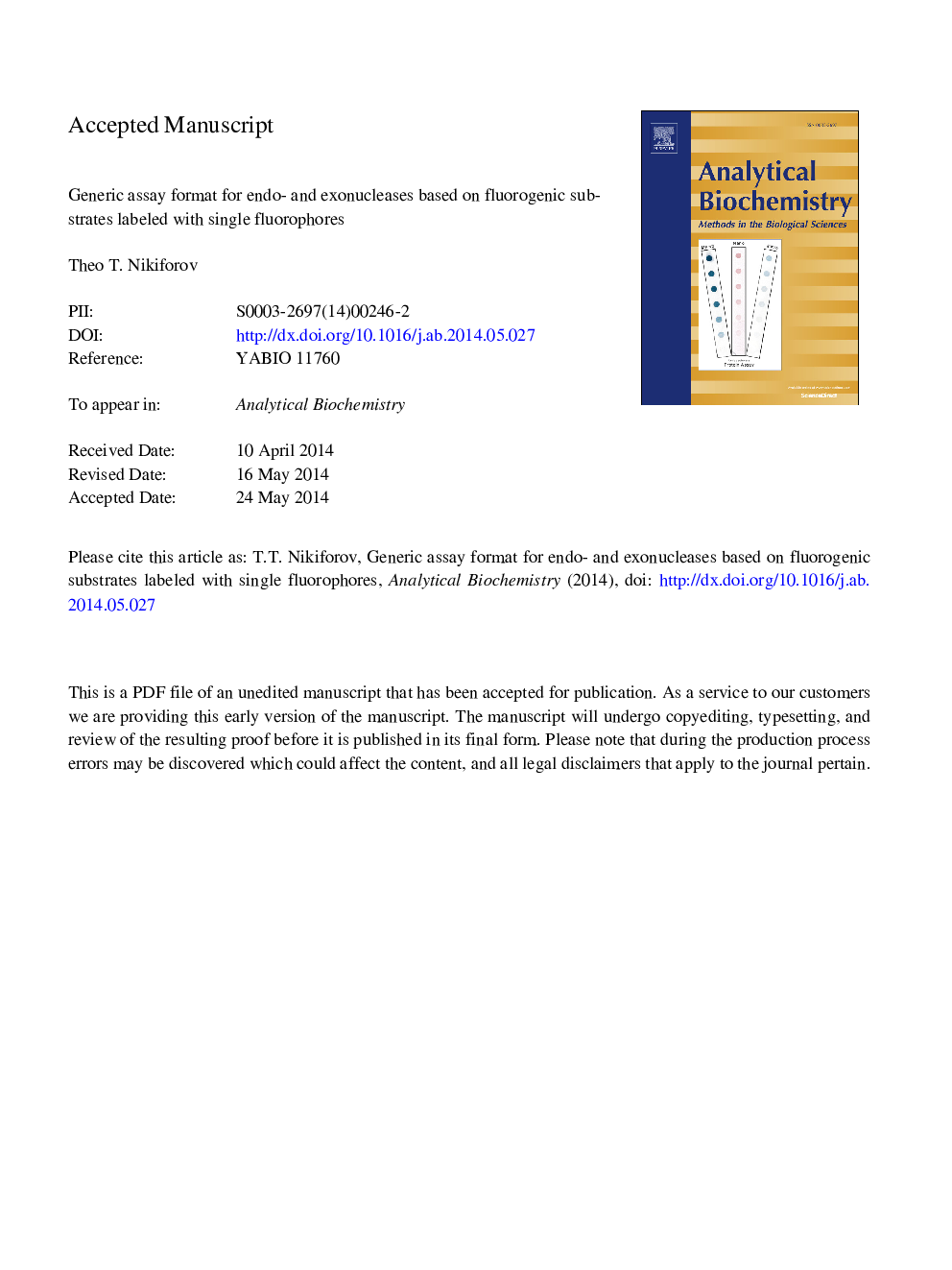| Article ID | Journal | Published Year | Pages | File Type |
|---|---|---|---|---|
| 7559140 | Analytical Biochemistry | 2014 | 33 Pages |
Abstract
We previously described the development of fluorogenic assays for nucleic acid-modifying enzymes based on synthetic oligonucleotides labeled with a single fluorophore. In the current work, we studied the performance of such singly labeled substrates as a function of the nucleotide sequence in the vicinity of the fluorophore and the nature of the fluorophore itself. In agreement with published studies, we found that a 3â² end of the primer terminating in a dC residue opposite a 5â² dG provides the greatest degree of fluorophore quenching. Adding a second dC residue at the 3â² penultimate position opposite another dG increased the quenching further. Among the various dyes tested, the difluoro substituted fluorescein derivative Oregon Green emerged as a superior fluorophore for this assay format. We have now combined these findings into a new generic format for endonuclease assays. This format allows a substrate for any endonuclease to be obtained rapidly by simply replacing the enzyme's recognition sequence within the generic labeled molecule. Compared with our previous format, the new assays show greatly expanded signal dynamic ranges. The format is applicable to other nucleic acid-modifying enzymes such as exonucleases (e.g., T7 gene 6 exonuclease) and DNA repair enzymes (e.g., uracil-DNA glycosylase).
Related Topics
Physical Sciences and Engineering
Chemistry
Analytical Chemistry
Authors
Theo T. Nikiforov,
